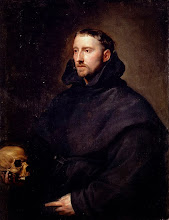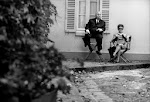
The Quiller Memorandum is a film adaptation of the 1965 spy novel The Berlin Memorandum, by Trevor Dudley-Smith under the name "Adam Hall", screenplay by Harold Pinter, directed by Michael Anderson, featuring George Segal, Max von Sydow, Senta Berger and Alec Guinness.
The film was shot on location in West Berlin and in Pinewood Studios, England and was nominated for 3 BAFTA Awards, while Pinter was nominated for an Edgar Award for the script.
In the dead of the night a man walks down a deserted Berlin street. He enters a phone booth, but as he dials a number, he is shot dead by an unseen sniper.
Jones was the second British Secret Intelligence Service (SIS) operative to be murdered in Berlin by a secret neo-Nazi organisation, Phoenix. SIS send Quiller (George Segal) to Berlin where, at the Nazis' 1936 Olympia Stadium, his controller Pol (Alec Guinness) quietly explains that "a new generation of Nazis has grown up, difficult to recognise because they don't wear uniforms any more", and orders him to find the Phoenix HQ. Pol's SIS superiors in London, Gibbs (George Sanders) and Rushington (Robert Flemyng), are occasionally seen directing the operation from their gentlemen's club.
Back in Berlin, Quiller shakes off someone following him, then confronts the tail in a pub, only to discover that the man is his SIS minder, Hengel (Peter Carsten). Hengel gives him a bowling alley ticket, a swimming-pool ticket and a newscutting, all found on Jones's body. Quiller asks after Jones at the bowling alley without success; the swimming pool manager Hassler (Günter Meisner) also sends him packing. Pretending to be a reporter, Quiller visits the school featured in the newscutting, where a teacher had recently been unmasked as a Nazi war criminal. The headmistress introduces him to teacher Inge Lindt (Senta Berger), who is fluent in English and whom he interviews about her colleagues, before then driving her back to her home and briefly stopping at her flat for a drink.
On leaving, Quiller confronts a man who seems to be following him. Having earlier told Hengel that he understands no German, Quiller is revealed to be able to speaking it fluently. The man strenuously denies following him and other men intervene in the discussion, before Quiller returns to his hotel. Outside the hotel, a porter bumps into his leg with a heavy suitcase. Quiller drives off, managing to shake his minder Hengel, but other cars appear to still be following him. Soon he becomes drowsy, and then semi-conscious while stopped at some traffic lights, where a car stops alongside him a man steps into the driving seat, pushes Quiller over, and kidnaps him.
He wakes in a chair in a palatial room, surrounded by many of the previous incidental characters, who are all Phoenix members led by a German aristocrat, Oktober (Max von Sydow). Quiller refuses to answer Oktober's questions about the SIS operation and how much they know about Phoenix, and makes a dash to escape from the room but is easily overpowered. A doctor injects Quiller with a truth serum, but although in his delirium he utters a few clues Quiller is just able to deflect Oktober's questions. Oktober orders Quiller to be killed.
Quiller comes round lying somewhere in the city beside the river. He hails a cab and steals it, evading a pursuing Mercedes before booking himself into a dingy hotel. He telephones Inge from the hall and they arrange to meet the following evening. Pol also arranges another meeting with Quiller, where his handler explains that each side is trying to discover and annihilate the other's base: Quiller alone is in a position to know both.
After sleeping with Quiller, Inge admits that she has a friend who might know the location of Phoenix's HQ. Inge takes Quiller to the swimming pool manager, Hassler, who is now much more friendly. He drives Quiller, Inge and Inge's headmistress to a dilapidated old building. Quiller wants to investigate the house on his own; Inge says she will wait for Quiller, and the pool manager and headteacher leave the car for Quiller to drive Inge home. When they are finally alone together in the car Inge tells him she loves him.
The street is the same one on which Quiller's predecessor was murdered at the start of the film. Quiller enters the house, which appears deserted, until he notices Oktober's henchmen standing all around him. They take Quiller into the same room where he was held captive and walk Quiller down to the cellar, where removal men are organising the move to a new HQ for the organisation. Quiller is horrified to see that Inge has been brought there too. Oktober offers Quiller an ultimatum: either he reveals where the SIS base is by dawn, or both of them will be killed. Quiller is released back onto the dark streets to walk and ponder, surrounded by Oktober's armed men, who - while they keep their silent distance - make it impossible for him to evade them, or use any public telephone to call his controller.
As dawn breaks, he returns to his hotel, while Oktober's men stand guard outside in the street. The hall phone has already been destroyed to prevent him using it, but he escapes into a courtyard of lock-up garages. Noticing a piece of wire on the ground, he finds that the car has been booby-trapped in case he attempted this method of escape. He leaves the engine running to explode the bomb, and Oktober's men assume that he has been killed in the explosion. Quiller reports to the SIS office with the location of Phoenix's centre of operations. Pol appears calmly indifferent as he arranges to round up the gang; they are all arrested, yet Inge turns out not to be among them.
Later, Quiller walks into Inge's classroom. Inge explains that she "was lucky they let me go", but Quiller appears to have concluded that she is not who she seems. He says that if ever he comes to Berlin again he will call her. He then walks away from the school building, as Inge watches him depart from the classroom window before returning to her schoolchildren.
.jpg)




































